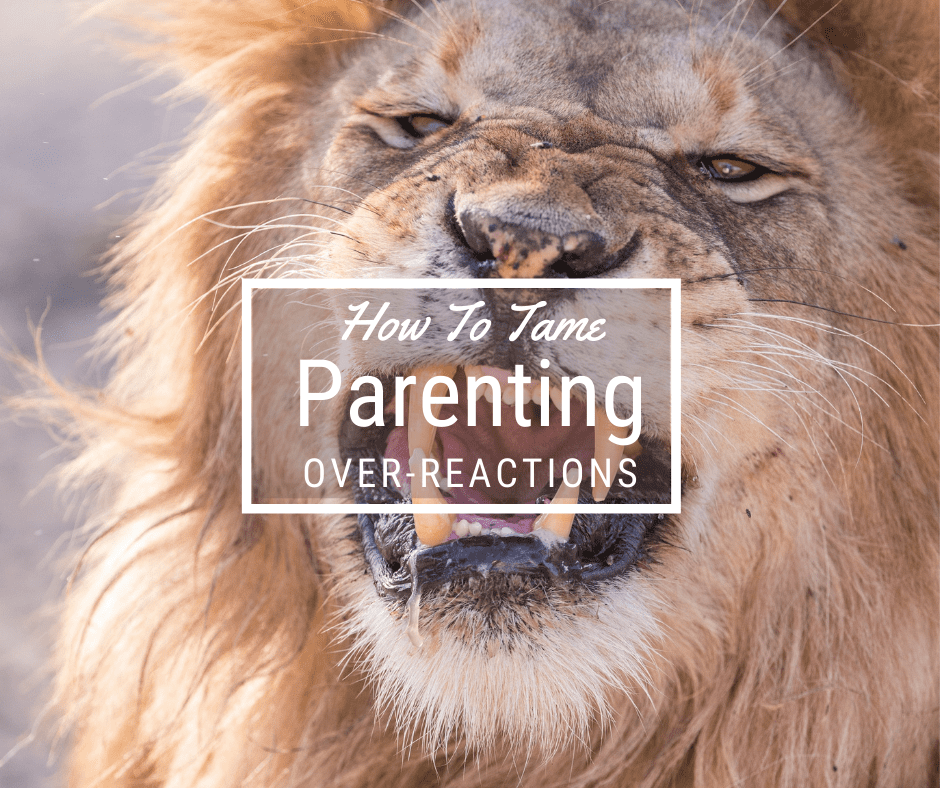
How to Tame Parenting Overreactions
OK parents, I have some bad news… you aren’t perfect. And I have a confession… neither am I. Since there is no such thing as a perfect parent it turns out that sometimes the most important thing we can do to help our children is focus our attention inward.
We’ve all been there. One second everything is going smoothly, and the next second, something your child does causes you to hear the Jaws soundtrack in your head. Moments later, you find yourself losing control. When we recognize that sometimes the problem is more about our parenting overreactions than our child’s behavior we face two difficult questions: why does this happen and what can we do about it?
In my experience, I have found that we overreact for a couple of reasons.
- The first is that your cumulative stress levels (unrelated to your kid’s behavior) are too high – think work stress, pandemic stress, not getting enough exercise stress.
- The second is because your child’s specific behavior triggers an emotional reaction rooted in your own past. The result is that, just like a young child, you lose control.
In both cases, the solution is self-care. The following steps will help you to take care of yourself, so that you’ll be able to keep your cool the next time your child hits a sensitive nerve.
Step 1: Reduce Cumulative stress
Change what you can, so that you get more sleep, more exercise, and more down time when possible. This will help recharge your battery. No one runs well on empty.
Step 2: Identify Your Triggers
Take a moment to think about the things your child does that always push you over the edge. Some common examples are when your child ignores you, talks back, becomes physical with a sibling, or leaves things lying around the house. If you’re not sure what your pain points are, use the PDF on the left for a week to track the things that cause you to have big reactions to your child.
Step 3: Learn the Internal Signs That You Are Becoming Upset
Maybe you already know that when you lose your temper, your face gets hot or your thoughts speed up. If you’re not sure what happens, get that PDF back out and make a list of what you notice. Some things to look for are tightness in the chest or jaw, a loud voice, fast speech, and catastrophizing thoughts like “I must be the worst parent ever.”
Step 4: When You Recognize Your Pattern, Pause and Name It with “Parts Language”
The more you make a point to become aware of your patterns, the easier it will be to recognize when a part of you has become activated in the moment. You might be in the middle of shouting at your child when suddenly you realize– OMG, this is my pattern. I can feel a parenting overreaction happening right now. With continued practice, you can learn to pause before you lose control. Stop and name what is happening out loud to your child. “There is a part of me that feels really angry when you give me that look.” Using parts language is important for several reasons. It allows you to make it clear to your child that even when “a part” of you is upset with him, he is still loved unconditionally by you. It also allows you to differentiate between yourself and your emotional reactions – we are more than just our sad, angry and worried parts. With practice these strong emotions can be expressed without over-reaction.
Step 5: Take Space to Take Care of Yourself
Once you have put words to the way you are feeling, it’s time to walk away. When we are learning new skills, we need time and space. If your spouse is there, ask him or her to take over parenting for a moment. Then, take some time to focus on the part of you that has become activated with compassionate curiosity. Compassionate curiosity means that you explore your own patterns without becoming judgmental toward yourself. You will find that just like a tantrumming child, this activated part of you will settle when it has your full attention. This part has has important information and you can learn to listen without letting the part run the show. For more info on Internal Family Systems “parts” therapy and how it can help kids and adults click here.
Step 6: Come Back to Your Child and Repair any Ruptures
Once you have calmed down, return to your child. If you lost your temper, own it saying something like, “I know that my reaction was big and scary. A part of me gets really upset when (blank) happens. I need you to know that I love you and that I am working hard not to overreact.” Remember, this is your opportunity to model for your child exactly how you would like him to take responsibility for his own big emotional reactions.
Step 7: Practice Self Care by Getting Help from an Expert
Doing this work is challenging but the results are a stronger connection with yourself and with your family members. If you have tried to do this and found it too difficult, I can help. Helping parents and children learn to mindfully connect is my passion. Remember, when you invest in yourself you are setting yourself up for parenting success.



